Mostafa Mohammadkarimi
Cooperative Sense and Avoid for UAVs using Secondary Radar
Jun 05, 2023Abstract:A new Sense and Avoid (SAA) method for safe navigation of small-sized UAVs within an airspace is proposed in this paper. The proposed method relies upon cooperation between the UAV and the surrounding transponder-equipped aviation obstacles. To do so, the aviation obstacles share their altitude and their identification code with the UAV by using a miniaturized Mode S operation Secondary surveillance radar (SSR) after interrogation. The proposed SAA algorithm removes the need for a primary radar and a clock synchronization since it relies on the estimate of the aviation obstacle's elevation angle for ranging. This results in more accurate ranging compared to the round-trip time-based ranging. We also propose a new radial velocity estimator for the Mode S operation of the SSR which is employed in the proposed SAA system. The root-mean-square error (RMSE) of the proposed estimators are analytically derived. Moreover, by considering the pulse-position modulation (PPM) of the transponder reply as a waveform of pulse radar with staggered multiple pulse repetition frequencies, the maximum unambiguous radial velocity is obtained. Given these estimated parameters, our proposed SAA method classifies the aviation obstacles into high-, medium-, and low-risk intruders. The output of the classifier enables the UAV to plan its path or maneuver for safe navigation accordingly. The effectiveness of the proposed estimators and the SAA method is confirmed through simulation experiments.
Low Complexity Time Synchronization for Zero-padding based Waveforms
Mar 13, 2023



Abstract:The discussion on using zero padding (ZP) instead of a cyclic prefix (CP) for enhancing channel estimation and equalization performance is a recurring topic in waveform design for future wireless systems that high spectral efficiency and location awareness are the key factors. This is particularly true for orthogonal signals, such as orthogonal frequency-division multiplexing (OFDM). ZP-OFDM is appealing for joint communications and sensing (JCS) in 6G networks because it takes the advantage of both OFDM and pulse radar. In term of communication, ZP-OFDM compared to CP-OFDM, has higher power efficiency and lower bit error rate (BER). However, time synchronization is challenging in ZP-OFDM systems due to the lack of CP. In terms of sensing, ZP facilitates ranging methods, such as time-sum-of-arrival (TSOA). In this paper, we propose a moment-based timing offset (TO) estimator for multiple-input multiple-output (MIMO) ZP-OFDM system without the need for pilots. We then introduce the which significantly improves the estimation accuracy of the previous estimator. We show that the proposed method asymptotically reaches the maximum likelihood (ML) estimator. Simulation results show very high probability of lock-in for the proposed estimators under various practical scenarios.
Maximum Likelihood Time Synchronization for Zero-padded OFDM
Feb 17, 2023



Abstract:Existing Orthogonal Frequency-Division Multiplexing (OFDM) variants based on cyclic prefix (CP) allow for efficient time synchronization, but suffer from lower power efficiency compared to zero-padded (ZP)-OFDM. Because of its power efficiency, ZP-OFDM is considered as an appealing solution for the emerging low-power wireless systems. However, in the absence of CP, time synchronization in ZP-OFDM is a very challenging task. In this paper, the non-data-aided (NDA) maximum-likelihood (ML) time synchronization for ZP-OFDM is analytically derived. We show that the optimal NDA-ML synchronization algorithm offers a high lock-in probability and can be efficiently implemented using Monte Carlo sampling (MCS) technique in combination with golden-section search. To obtain the optimal NDA-ML time synchronization algorithm, we first derive a closed-form expression for the joint probability density function (PDF) of the received ZP-OFDM samples in frequency-selective fading channels. The derived expression is valid for doubly-selective fading channels with mobile users as well. The performance of the proposed synchronization algorithm is evaluated under various practical settings through simulation experiments. It is shown that the proposed optimal NDA-ML synchronization algorithm and its MCS implementation substantially outperforms existing algorithms in terms of lock-in probability.
Activity Detection for Grant-Free NOMA in Massive IoT Networks
Dec 23, 2022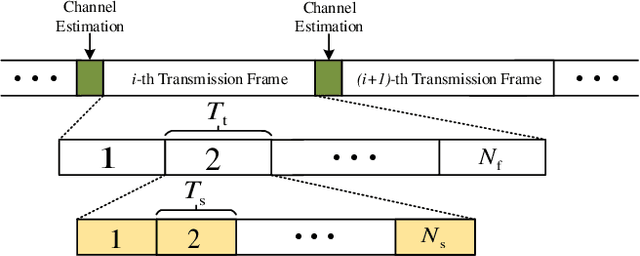

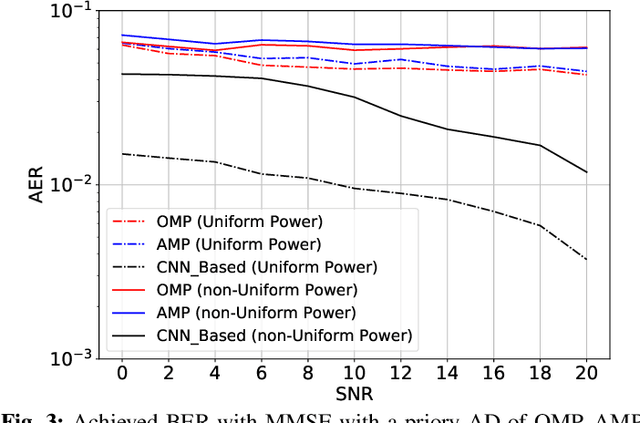
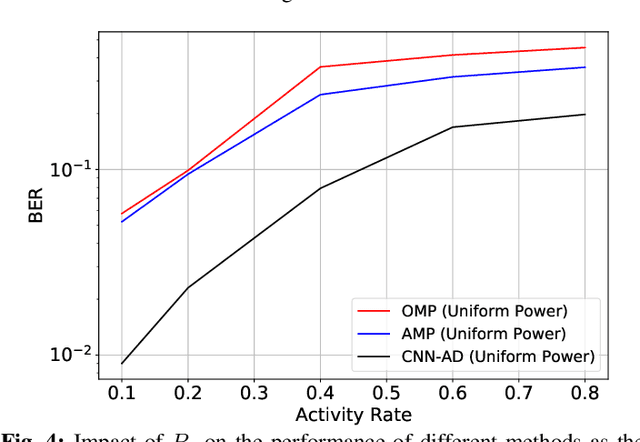
Abstract:Recently, grant-free transmission paradigm has been introduced for massive Internet of Things (IoT) networks to save both time and bandwidth and transmit the message with low latency. In order to accurately decode the message of each device at the base station (BS), first, the active devices at each transmission frame must be identified. In this work, first we investigate the problem of activity detection as a threshold comparing problem. We show the convexity of the activity detection method through analyzing its probability of error which makes it possible to find the optimal threshold for minimizing the activity detection error. Consequently, to achieve an optimum solution, we propose a deep learning (DL)-based method called convolutional neural network (CNN)-activity detection (AD). In order to make it more practical, we consider unknown and time-varying activity rate for the IoT devices. Our simulations verify that our proposed CNN-AD method can achieve higher performance compared to the existing non-Bayesian greedy-based methods. This is while existing methods need to know the activity rate of IoT devices, while our method works for unknown and even time-varying activity rates
Deep Learning Based Sphere Decoding
Jul 06, 2018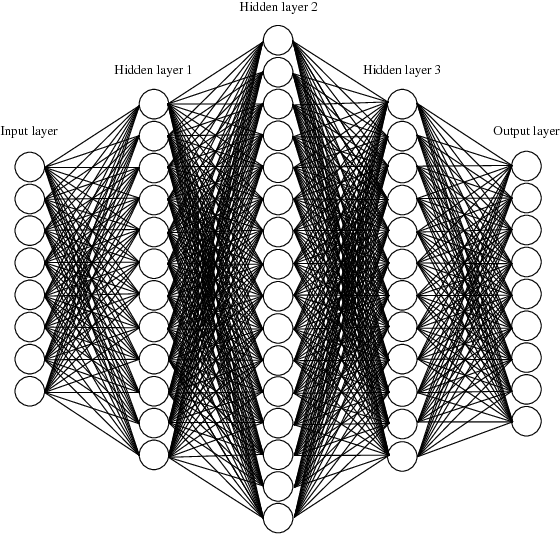
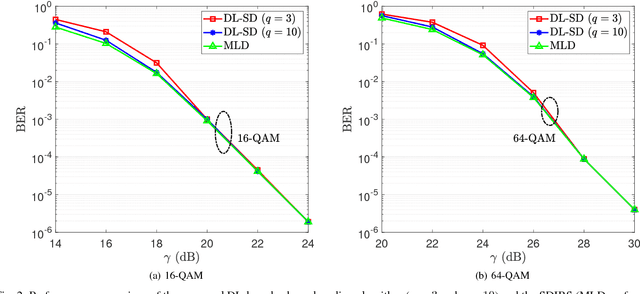
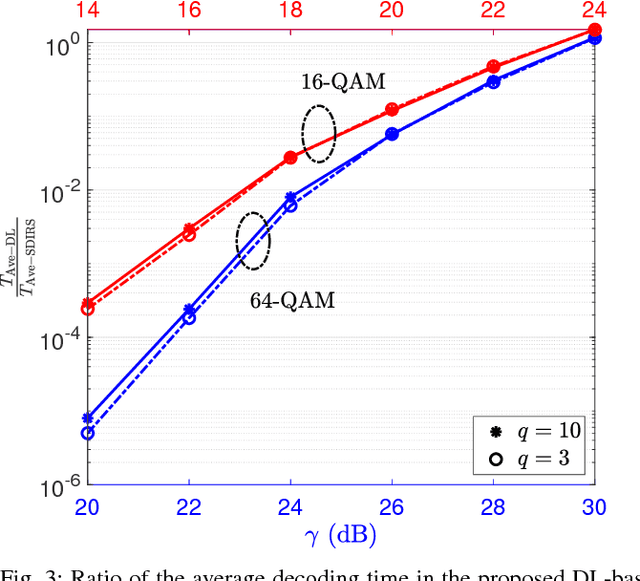
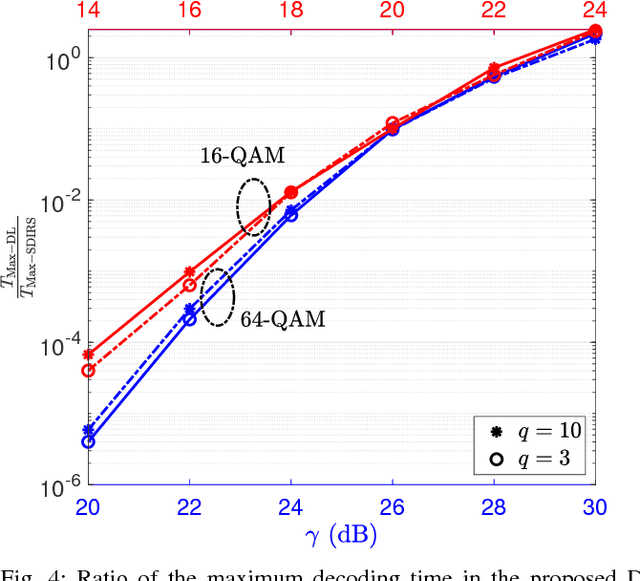
Abstract:In this paper, a deep learning (DL)-based sphere decoding algorithm is proposed, where the radius of the decoding hypersphere is learnt by a deep neural network (DNN). The performance achieved by the proposed algorithm is very close to the optimal maximum likelihood decoding (MLD) over a wide range of signal-to-noise ratios (SNRs), while the computational complexity, compared to existing sphere decoding variants, is significantly reduced. This improvement is attributed to DNN's ability of intelligently learning the radius of the hypersphere used in decoding. The expected complexity of the proposed DL-based algorithm is analytically derived and compared with existing ones. It is shown that the number of lattice points inside the decoding hypersphere drastically reduces in the DL- based algorithm in both the average and worst-case senses. The effectiveness of the proposed algorithm is shown through simulation for high-dimensional multiple-input multiple-output (MIMO) systems, using high-order modulations.
 Add to Chrome
Add to Chrome Add to Firefox
Add to Firefox Add to Edge
Add to Edge